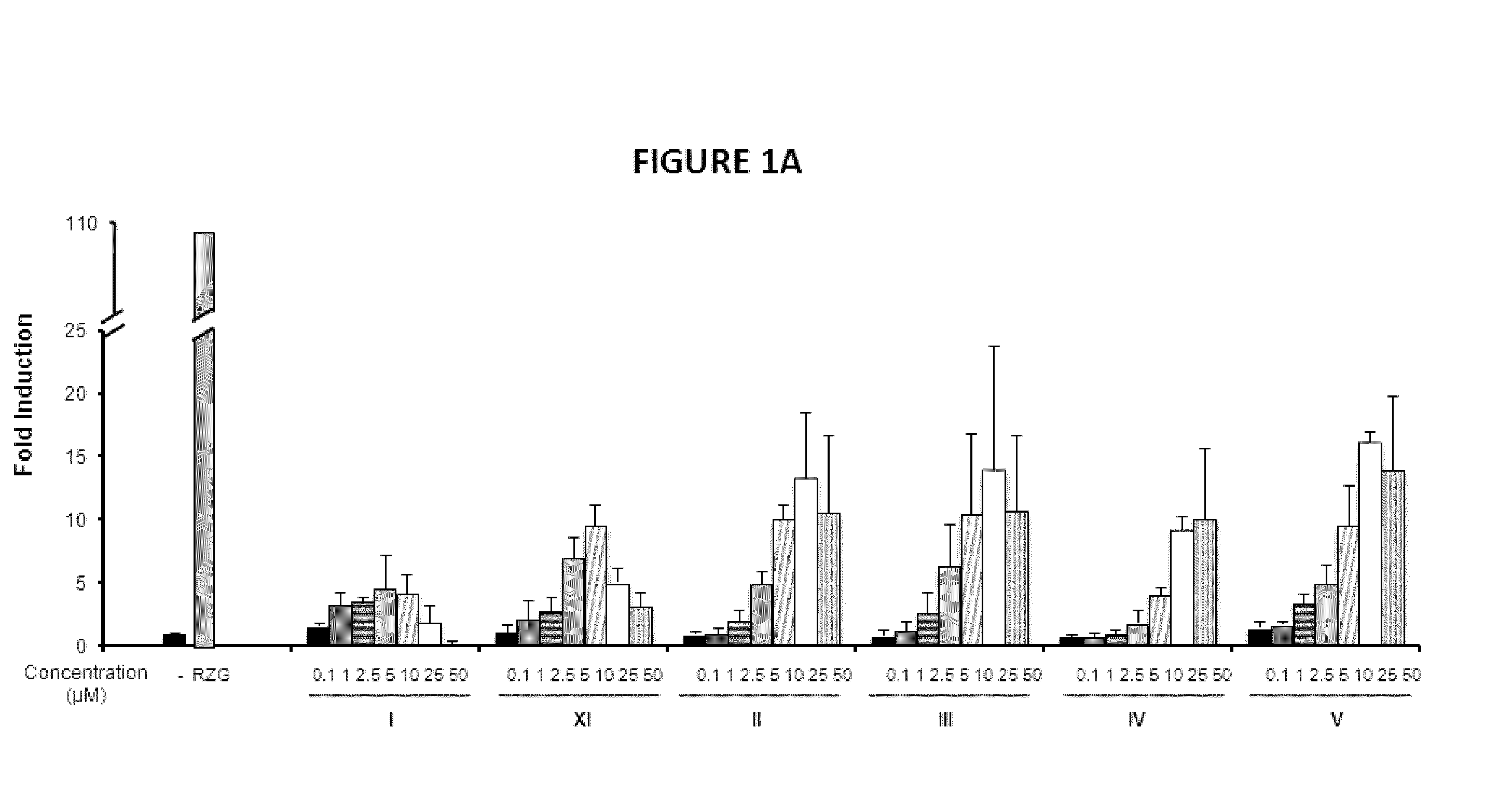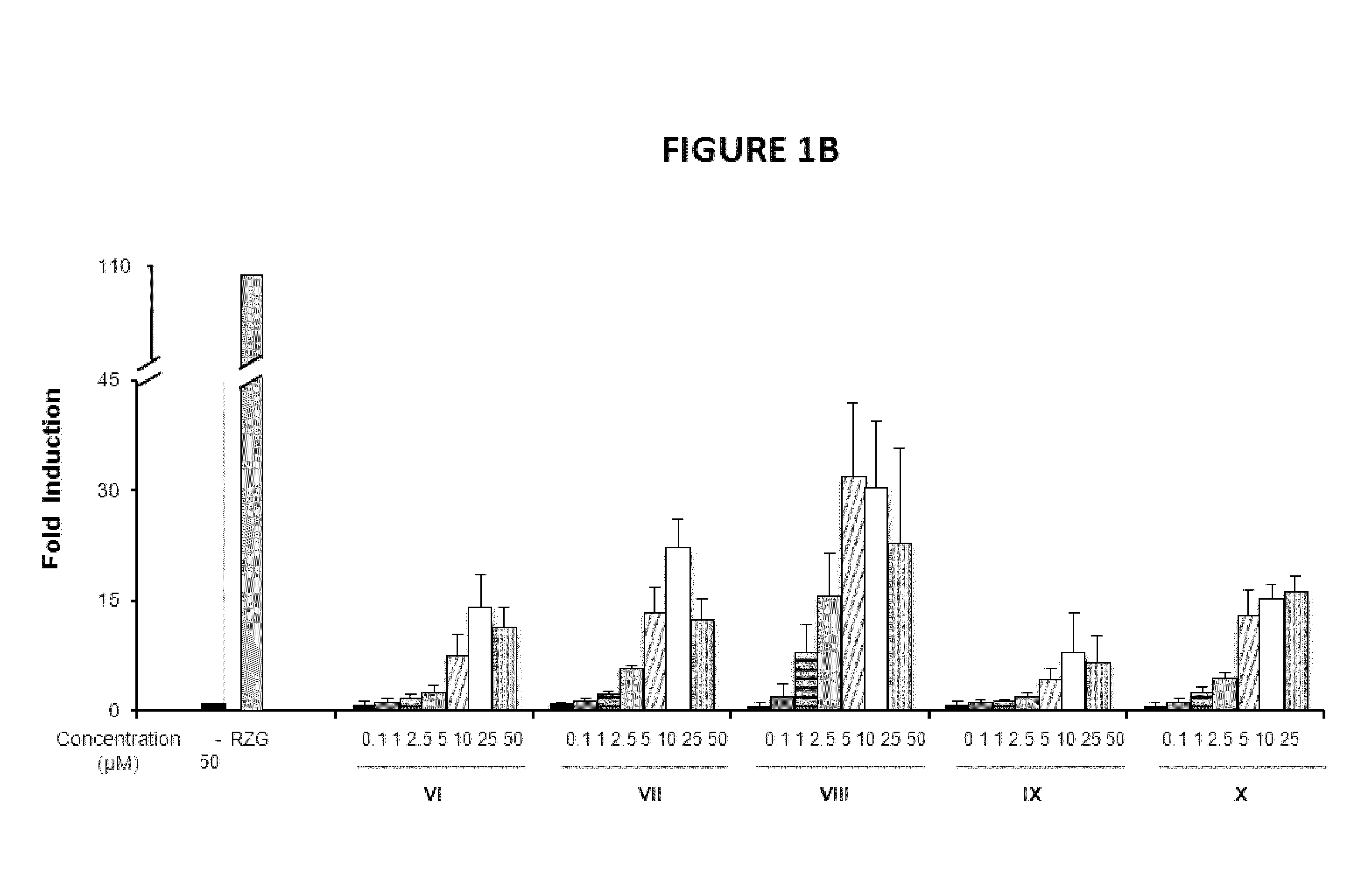Novel cannabidiol quinone derivatives
- Summary
- Abstract
- Description
- Claims
- Application Information
AI Technical Summary
Benefits of technology
Problems solved by technology
Method used
Image
Examples
example 1
Chemical Synthesis and NMR Analysis
A) Synthesis of CBD Quinone Derivatives Starting from CBD. Synthesis of Compounds II to X
[0099]Synthesis of VCE-004 (also named HU-331 or compound I) from CBD was carried out by using tBuOK in toluene, at r.t., in the presence of air (Scheme 1). Synthesis of derivatives substituted at 3-position with alkylamines was easily accomplished by reacting VCE-004 with a large excess of amine, at r.t., in an air-opened reaction system.
[0100]Flash chromatography purification furnished 90-95% pure product, which could be further increased up to 98% by means of HPLC purification. High conversion was achieved within several hours, to give spot-to-spot reactions. Solvent was evaporated, and the crude residue was purified by reverse phase chromatography, to give products with purities about 95%.
Preparation Compound I
[0101]tBuOK (298 mg, 2.656 mmol) was added to a solution of CBD (302 mg, 0.960 mmol) in toluene (60 mL), to give a purple-colored solution. The react...
example 2
PPARg Agonistic Activity
[0149]To investigate the biological activities of the novel compounds we performed PPARg transactivation assays in HEK-293 cells and in NIH-3T3 fibroblasts cells.
[0150]HEK293T cells and human primary fibroblasts cells were maintained at 37° C. in a humidified atmosphere containing 5% CO2 in DMEM supplemented with 10% fetal calf serum (FBS), and 1% (v / v) penicillin / streptomycin. Rosiglitazone was purchased from Cayman Chemical Company (Ann Arbor, Mich., USA). All other reagents were from Sigma Co (St Louis, Mo., USA). HEK293T cells (2×103 / well) (FIGS. 1A, 1B and 1C) or NIH-3T3 cells (5×103 / well) (FIG. 2) were seeded in BD Falcon™ White with Clear Bottom 96-well Microtest™ Optilux™ Plate for 24 hours. Afterwards, cells were transiently co-transfected with the expression vector GAL4-PPARγ and the luciferase reporter vector GAL4-luc using Roti©-Fect (Carl Roth, Karlsruhe, Germany) following the manufacturer's instructions. Twenty-four h post-transfection, cells w...
example 3
Cannabidiol-Quinone Derivatives and Rosiglitazone Bind to the Same Site in the PPARg Protein
[0151](A) HEK293T cells were maintained at 37° C. in a humidified atmosphere containing 5% CO2 in DMEM supplemented with 10% fetal calf serum (FBS), and 1% (v / v) penicillin / streptomycin. Rosiglitazone was purchased from Cayman Chemical Company (Ann Arbor, Mich., USA). HEK293T cells (2×103 / well) (FIG. 3A) were seeded in BD Falcon™ White with Clear Bottom 96-well Microtest™ Optilux™ Plate for 24 hours. Afterwards, cells were transiently co-transfected with the expression vector GAL4-PPARγ and the luciferase reporter vector GAL4-luc using Roti©-Fect (Carl Roth, Karlsruhe, Germany) following the manufacturer's instructions. Twenty-four h post-transfection, cells were pretreated with increasing doses of the compounds for 30 min and then stimulated with RSZ (1 μM) for 6 hours. The transcriptional activity of PPARg was measured as in example 2, ratifying that those compounds III, V, VIII, X, and XII...
PUM
| Property | Measurement | Unit |
|---|---|---|
| Composition | aaaaa | aaaaa |
| Cytotoxicity | aaaaa | aaaaa |
| Electrophilic | aaaaa | aaaaa |
Abstract
Description
Claims
Application Information
 Login to View More
Login to View More - R&D
- Intellectual Property
- Life Sciences
- Materials
- Tech Scout
- Unparalleled Data Quality
- Higher Quality Content
- 60% Fewer Hallucinations
Browse by: Latest US Patents, China's latest patents, Technical Efficacy Thesaurus, Application Domain, Technology Topic, Popular Technical Reports.
© 2025 PatSnap. All rights reserved.Legal|Privacy policy|Modern Slavery Act Transparency Statement|Sitemap|About US| Contact US: help@patsnap.com



